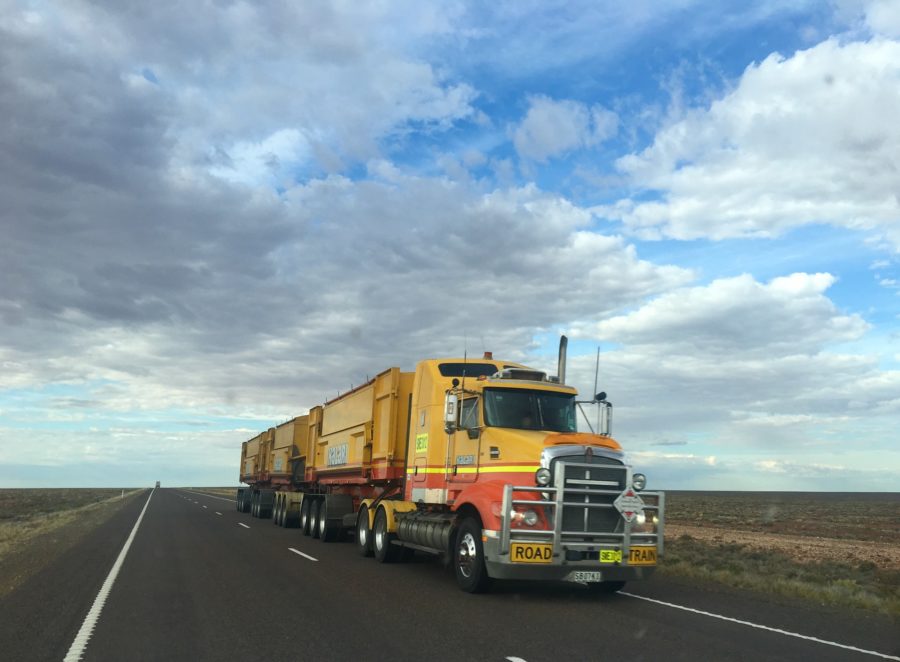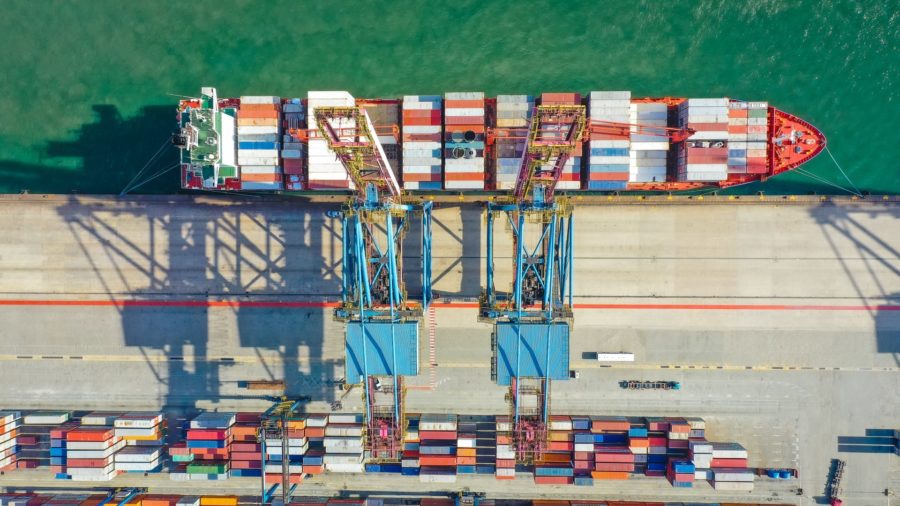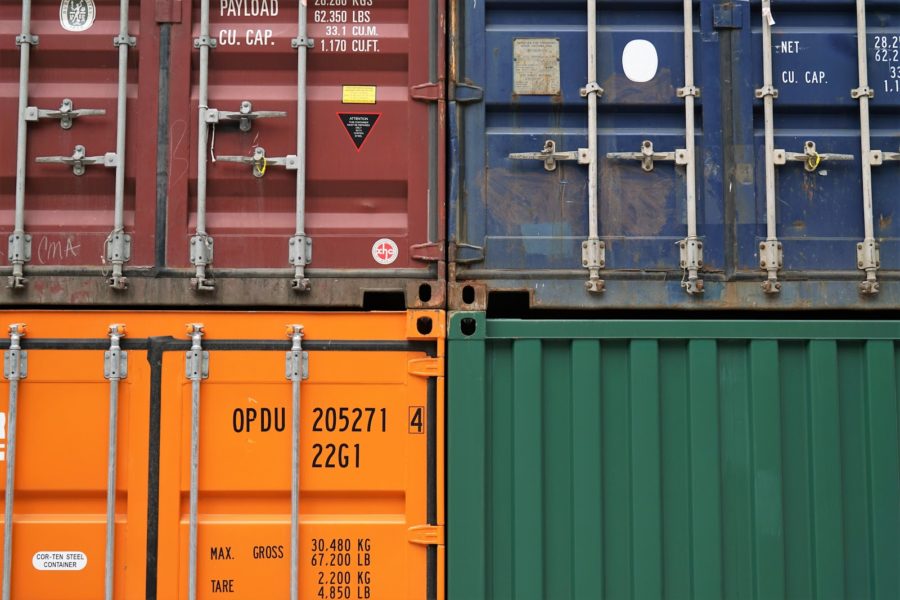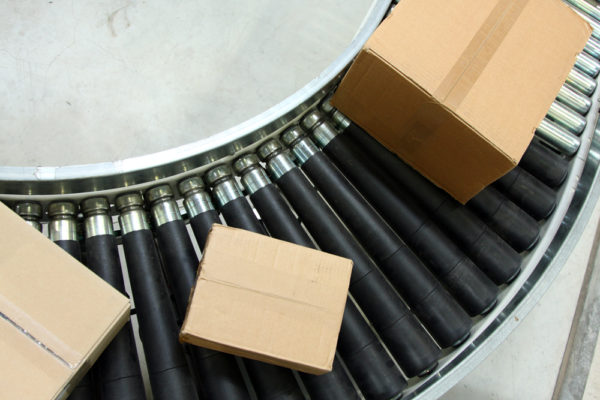News
Sign up for recent trade news that can affect your business:
If you want to import goods to Canada, there are certain steps you will need to take to maintain compliance and keep the process efficient. The following is a brief guide to help you with imports for commercial goods of various types.
Before importing, you will need to take some steps to prepare, including:
• Get a Business Number (BN) – Prior to importing, you will need a Business Number from the Canada Revenue Agency (CRA) to open an account.
• Determine which goods to import – You will also need to determine which goods to import, with in-depth descriptions, details about composition, and product samples if possible.
• Decide if you want to work with a customs broker – You have a choice of working with a customs broker or dealing directly with the Canada Border Services Agency, but a customs broker like the experts at Carson International can help ease the process and ensure you avoid costly penalties from Customs.
• Identify the country of origin for your goods
• Make sure the goods you’re importing aren’t prohibited in Canada
• Find out if any permits, regulations, or restrictions apply to your goods
Once you’ve prepared for importing, you will need to determine the appropriate tariff classification number. Canada, along with other countries such as the U.S. and China, uses the Harmonized System (HS) to classify goods. In many cases, you will be able to use the first six digits to identify a specific good across all countries.

After determining tariff classification, you will need to determine which tariff treatment and rate of duty apply to your goods. The CBSA’s Customs Tariff Schedule will help you determine which treatment matches your goods prior to determining the rate of duty.
Once you’ve figured out the tariff treatment, you will need to find out if goods are subject to the goods and services tax, excise duty, or excise tax. Some items such as medical products, prescription drugs, agricultural and fishing goods, and basic groceries are non-taxable.
You will then need to calculate the value for duty of the goods you wish to import. Typically, the value for duty will be the total amount that you pay a vendor for your goods, which you should be able to support with an invoice or receipt.
You will also need to determine in advance how much taxes and duty you will need to pay based on the value appearing on the invoice. Convert the value into Canadian currency using the current exchange rate. You can contact the Border Information Service for the proper exchange rate.
If this step seems overwhelming, you’re not alone. Navigating tariff classifications and treatments can be quite challenging if you’re not familiar with the industry. That’s why we recommend reaching out to professional customs brokers like us, so we can do all this heavy lifting for you.
The next step will be to place the order with your vendor and choose a shipping method, whether it’s rail, highway, air, marine, courier, or postal service. You will also need to determine the CBSA office where goods will be released.
You will then report your goods to the CBSA regardless of who’s transporting the goods.
You can get your goods released via either full accounting and payment of duties or the release of goods before paying for duties. You can prepare the release either on your own or work with a customs broker for assistance.
Once the goods are released, adjust for any errors in the information you provided and maintain all records for at least six years after importation. The CBSA may also verify imports and make any adjustments on their own.
Taking all of these steps and considering the aspects involved can help you keep the importation process smooth. If you’re in need of a knowledgeable customs broker to help guide you through the process, the experts at Carson International can provide reliable assistance from start to finish.

Prime Minister Justin Trudeau says he is concerned by reports suggesting Washington is considering reimposing tariffs on Canadian metals just as Canada, the United States and Mexico are celebrating the launch of a new free trade deal.
Speaking to reporters in Ottawa, Trudeau said he looks forward to congratulating U.S. President Donald Trump on the coming into force of the United States-Mexico-Canada Agreement (USMCA), also known as CUSMA in Canada.
The free trade agreement between the three North American neighbours officially came into force on July 1, replacing the 26-year-old North American Free Trade Agreement (NAFTA).
“I think it’s really important that at a time of economic strain and stress, we continue to have access to the world’s most important market and this is good for Canadian workers and Canadian jobs right across the country,” Trudeau said.
“At the same time, we are concerned about the threat of extra tariffs on aluminum and possibly steel. This is something that again is a little difficult to understand, because the United States relies heavily on imports of Canadian aluminum, in particular, for their domestic manufacturing capacity.”
Trudeau said the U.S. doesn’t produce nearly enough aluminum to cover its needs.
Canadian officials are “continuing to push very hard on encouraging the U.S. not to move forward on tariffs” that lack any justification and would have a negative impact, Trudeau said.
The United States imposed tariffs on Canadian and Mexican steel and aluminum imports in 2018 but removed them last year.
Catherine Cobden, a spokesperson for the Canadian Steel Producers Association, said the organization heard some conflicting reports about the possibility of tariffs being reimposed by Washington.
“I can’t confirm whether or not steel is part of what the U.S. is considering,” Cobden told Radio Canada International. “What I can tell you, though, is there is absolutely no need for tariffs, especially now when we signed the USMCA, which is a very strong agreement for North American steel producers.”
The American Primary Aluminum Association (APAA), which represents two of the last three remaining primary producers in the United States, has argued that a “surge” of Canadian aluminum exports to the United States is threatening the viability of the domestic primary aluminum industry.
APAA CEO Mark Duffy has called on the Trump administration to reimpose the so-called Section 232 tariffs on Canadian aluminum on national security grounds “to save American jobs.”
The U.S. Aluminum Association, which represents more than 120 companies across the entire industry, disagrees with that position.
Aluminum Association president and CEO Tom Dobbins has argued that the U.S. trade action should focus on Chinese overcapacity rather than Canadian exports.
In a report issued Wednesday, the U.S.-based Competitive Enterprise Institute, a conservative think tank, urged the Trump administration to get rid of all tariffs.
“Tariff reform should have been a priority before the coronavirus hit, but now it’s even more urgent to lift trade barriers, in particular for health care supplies and treatments,” said Ryan Young, CEI senior fellow and author of the report, in a statement.
“Tariffs were never needed in the first place, and they are causing harm during a potentially Depression-level economy. The time to act is now.”
Among other things, the report calls on Congress to “make big-picture, institution-level reforms to U.S. trade policy” — including the repeal of Section 232 of the Trade Expansion Act of 1962 and Sections 201 and 301 of the Trade Act of 1974 — to “restore tax authority to the legislature and make trade policy less subject to presidential whim.”
(Source: CBC News)

Canada Border Services Agency (CBSA) has begun collecting personal information from truck drivers at several border crossings on behalf of the Public Health Agency of Canada (PHAC).
This has taken some drivers, including lease-operator Greg Decker by surprise, and caused some concern. He was recently asked for his personal email address and cell phone number while crossing at Coutts, Alta.
Decker called the CBSA toll-free line, but didn’t receive any further information on why his personal info was being collected. He then turned to social media and found other drivers had been asked for the same information at Coutts.
“This adds to the already catastrophically high stress level,” Decker told Today’s Trucking in an email. “If the government wants this information, have the courtesy and respect to explain why in public.”
CBSA’s Prairie Region media spokesman, Luke Reimer, confirmed the information is being collected on behalf of PHAC at several border crossings as part of a pilot project. Those crossings include: St. Stephen 3rd Bridge, N.B.; St-Armand/Phillipsburg, Que.; Lansdowne, Ont.; Queenston-Lewiston Bridge, Ont.; Coutts, Alta.; and Pacific Highway, B.C.
“As of June 30, in conjunction with PHAC, the CBSA launched a pilot project to collect contact information from persons who are exempt from quarantine by virtue of falling within one of the exemptions in Section 6 of Order in Council 2020-0524. This is so these exempt persons may be contacted during the 14-day period that begins on the day on which they enter Canada,” Reimer explained, noting further border crossings may also take part.
If requested for their personal information, “it is mandatory for travelers – including exempt persons – to provide their contact information in accordance with section 15(1) of the Quarantine Act and section 2(b) of the Order in Council 2020-0523,” Reimer added.
Decker is unhappy the pilot wasn’t communicated to the trucking industry before its launch, and still has some reservations about providing personal information at the border. He also questions the effectiveness of the approach.
“There is zero chance that I would reply to either a phone call or email from anyone claiming they are from a government agency. Do they not realize the volume of calls we receive from scam artists claiming to be from CRA? Or the latest scam, from the RCMP?” Decker noted.
“I understand the desire and intent, but they should have actually consulted someone outside of their bubble,” he added. “Most truck drivers I know are not going to respond to inquires from Public Health, many are giving their company emails and phone numbers.”
(Source: trucknews.com)

The BC Apparel and Gear Association is pleased to host a free webinar with Carson International’s Vice President, Dave Pentland. He will walk us through the major changes from NAFTA to USMCA that affect the Apparel, Footwear and Gear Sector.
Dave has worked in the Customs and Logistics Industry for the past 40 years, much of this involved with large, medium and smaller apparel, footwear, action sports companies. With experience in the airline industry, trucking industry, freight forwarding as well as Canadian and American Customs Brokerage, He is a Licensed Canadian Customs Broker and an IATA Certified Freight Forwarder. Dave has guest lectured at a number of post-secondary institutions and hosted many Trade Association Seminars on a wide array of Customs, Logistics and International Trade topics.
Date: Thursday, July 9, 2020
Time: 12:00 noon PDT

Carriers will keep capacity tight to protect their bottom line, meaning shippers will need to get used to paying higher ocean freight rates, according to DHL Global Forwarding’s Dominique von Orelli.
The global head of ocean freight for the Germany-based forwarder says he has never seen carriers as united as they are today in their strategy of managing capacity to match demand.
To manage the steep drop in volume as major markets locked down in the battle against COVID-19, carriers have been blanking significant numbers of sailings. Sea-Intelligence Maritime Consulting data show carriers have announced 74 blank sailings from Asia to North America for April and May. Asia-Europe trades will cancel 75 sailings through September in a bid to match capacity with weak anticipated volume levels.
The amount of capacity withdrawn from service in the third quarter means shippers would have to improve their long-term planning over the next few months, von Orelli said.
“What’s clearly been shown in the last two months is that carriers are really agile in taking out capacity, and extremely quick at changing schedules,” says von Orelli. “Carriers will do whatever they have to in order to keep the capacity tight and to protect their bottom line, so service will not be the number one criteria for the carriers at the moment.”
Tight industry-wide management of capacity has enabled carriers to not only prevent a rate slide, but to actually push rates higher — significantly, on some east-west trades. The Shanghai Containerized Freight Index (SCFI) this week shows Asia-US West Coast rates at $2,692 per FEU, up 94 percent year over year, while Asia-North Europe rates are 18 percent higher at $890 per TEU.
Von Orelli said he was “cautiously optimistic” for the second half of the year and expected the forwarder’s volume to grow at levels slightly ahead of the market, but there was certainly no surge in demand so far on the Asia-Europe trade.
“There is some replenishment going on, but we don’t see a big rush from European importers to fill up stock. Everyone seems to be ramping up in slow motion,” he said. “I don’t think there is a big appetite to consume, and importers are cautious not to buy what they cannot sell.”
(Source: JOC)
If you have any questions about ocean rates, please get in touch:
Mike Long — mlong@carson.ca
Tyler Carson — tcarson@carson.ca
The COVID-19 pandemic has had a certain impact on the supply chain across North America. The following is a timeline of recent updates around changes made to the supply chain that we’ve been keeping track of at Carson International. Many of the current changes implemented have attempted to help maximize safety while ensuring that supply chains continue to function as needed.
As the COVID-19 pandemic continued to spread in April, the Canadian Food Inspection Agency (CFIA) decided to suspend certain low-risk CFIA activities that had no effect on the production of safe food in Canada. Changes included increased flexibility for labeling requirements in place for foodservice products that don’t affect food safety, including products used for restaurants, hotels, and institutions.
You can read more about this update at the following link: https://www.carson.ca/2020/04/cfia-temporarily-relaxes-labelling-requirements-for-foodservice-products-during-covid-19-pandemic/
FEMA announced plans to provide certain exemptions to a rule that temporarily banned the overseas shipment of certain medical supplies. The rule came shortly after President Trump issued an executive order invoking the Defense Production Act that would halt the export of medical products when in short supply. However, certain types of shipments are exempted from the rule according to U.S. Customs and Border Protection.
You can read more about this update at the following link: https://www.carson.ca/2020/04/fema-refines-scope-of-medical-supply-export-ban/

In late April, the federal government made an announcement that it would provide farmers and other food production and process employees $50 million to go toward implementing a mandatory 14-day isolation period for all newly arrived foreign workers. The move would help maintain a safe food supply chain, a large portion of which relies on contributions from foreign workers. In addition to foreign workers, individuals exempted from the travel ban would include other foreigners with work and student visas as long as they undergo a 14-day isolation period before entering the population and workforce.
You can read more about this update at the following link: https://www.carson.ca/2020/04/canadian-government-announces-50m-to-keep-food-supply-chain-safe/
Resilience360, makers of cloud-based software that many businesses use to track and gain insight into business operations, released reports that identified certain challenges that the U.S. and Canada would face in cross-border operations. Due to the differences at the state and federal levels, the pandemic has disrupted the supply chain in several ways. In addition to challenges in the U.S. and Canada, Mexico has also experienced certain inconveniences since closing its factories in late March.
You can read more about this update at the following link: https://www.carson.ca/2020/05/disrupted-supply-chains-strain-trade-among-u-s-mexico-and-canada/
If you would like to receive more updates about changes to the supply chain in North America, we’ll provide more information as it comes. Simply return to Carson International for future announcements or visit our CUSMA page.

U.S. Customs and Border Protection published an Interim Final Rule to implement Rules of Origin provisions for the new United States-Mexico-Canada Agreement that came into force on July 1.
The interim rule creates Part 182 to the customs regulations for the new trade deal and amends the NAFTA regulations under 19 CFR Part 181 so they no longer apply to entries on or after July 1.
The majority of the regulations included in the interim final rule are found in Appendix A to 19 CFR Part 182, which reproduces the Rules of Origin provisions of the Uniform Regulations agreed upon by the U.S., Mexico, and Canada and released last month.
This appendix contains the uniform regulations for the interpretation, application, and administration of the Rules of Origin of Chapter 4 of USMCA and the Rules of Origin of Chapter 6 of USMCA related to textiles and apparel goods.
Currently, most of the sections of 19 CFR Part 182 include a title only and are reserved for future regulatory text.
CBP says it expects to publish additional regulations over the course of the next year and be finalized by July 1, 2021.

With the United States adding 40,000 new cases of COVID-19 each day, the European Union is leaving the U.S. off a list of 15 countries whose citizens soon will be allowed to visit its 27 member nations. In Canada, there seems to be no great desire to quickly reverse the unprecedented border restrictions that were imposed in March.
The question for Canadians is how much longer the virtual wall will have to be in place — and how much it might hurt to keep it there.
“My guess is it’s going to have to stay closed for more than 12 months,” Colin Furness, an epidemiologist at the University of Toronto, told CBC News this week. “It’s hard to imagine what’s going to happen in the United States until we have a vaccine or until the population has been sufficiently infected that you have herd immunity.”
When Leger Marketing asked Canadians in May when they thought Canada should reopen its border with the United States, 47 per cent of respondents said “not before the end of the year.” With more than 2.6 million cases now in the United States, it’s unlikely Canadians’ enthusiasm for welcoming our American neighbours has increased since then.
An exemption for “essential” travel significantly reduced the disruption to the Canadian economy. “Canadians continue to get the food, medicine, commercial goods, and other essential supplies they need to live and work, and Canadian exporters for the most part have not suffered disruption,” said Goldy Hyder, president and CEO of the Business Council of Canada.
But the decline in traffic across the border has still been precipitous. According to data obtained by Postmedia, between June 15 and June 21 just 170,998 people entered Canada at a land crossing with the United States — and 104,247 of those people were truck drivers. Over the same period in 2019, more than 1.2 million people traveled through a land crossing from the U.S. into Canada.
Based on those numbers, the pandemic is going to leave a deep mark on the Canadian tourism industry and on border towns like Windsor and Sarnia, Ontario. Hyder and the Business Council have called on the federal government to extend its wage subsidy for the tourism sector through the rest of the year.
But it can’t be assumed that the exemption for essential business travel and widespread use of video conferencing are preventing all damage to the economic relationships between Canadians and Americans.
“People say, okay, well, the trucks are going, so the supply chains are working. But the supply chains reflect agreements and contracts that were made in the past with a lot of face-to-face interaction,” said Bill Anderson, director of the Cross-Border Institute in Windsor. “If those agreements aren’t being made now, the question is — what’s the supply chain going to look like six months to a year from now?”
But all complications associated with the current restrictions must be balanced against the significant health risks of reopening the border — and the economic disruption that would occur if there is a resurgence of COVID-19 in Canada.
The border restrictions put in place in March have been extended three times and are now set to expire on July 21 — officially, at least. Even if the deal is only extended for another month, it’s likely time to accept that a largely closed border between Canada and the United States is, like the disease itself, going to be our reality for the foreseeable future — and to plan accordingly.
(Source: CBC)

Maintaining efficiency across your entire supply chain can help reduce overall expenses and ultimately increase profitability. Considering the rapid developments of today’s supply chain technology like TMS, and the increasing demands of consumers, having a streamlined supply chain and top notch distribution services are crucial for success.
There are certain steps you can take to streamline your supply chain and maintain the efficiency of operations.
It’s important for you to have a specific process in place to review your supply chain and identify any weaknesses that you can address. Try to evaluate your supply chain processes as soon as you can, which will enable you to find and resolve any issues that could otherwise hinder efficiency and profitability.
With more optimized processes along the supply chain, you’ll be able to improve lead times and benefit from potentially significant cost reduction. You can also maintain a consistent stock level that will cut down on costs pertaining to handling and warehousing.
Many outdated in-house supply chain systems may be difficult to use, unnecessarily complex, and inflexible, let alone challenging to retrofit. However, it’s important to extract any invaluable data that still might be crucial to your supply chain after an upgrade.
Using the information gathered from your legacy systems, you can more successfully integrate old systems with new ones utilizing devices such as smartphones, tablets, laptops, and other tools. As a result, you’ll be able to experience an easier transition when optimizing your supply chain.
One of the key ways to increase efficiency and further decrease costs is to eliminate manual data entry, including entry of duplicate data across a variety of systems that would otherwise waste resources and time. Keeping multiple sets of the same data in several systems can also increase the risk of inaccuracies, but streamlining with automation will mitigate this risk.
Getting rid of tedious data entry tasks will also help improve employee productivity and enable them to redirect attention to more important matters, including customer interaction.

When you streamline your supply chain, you’ll also be able to direct your attention to the bigger picture beyond simple order fulfillment, allowing you to focus on and gain a better understanding of what your customers want and need from you. Understanding your customers will be particularly crucial if you provide customized products and services as you can focus on delivering exactly what they’re looking for, leading to increased profits.
In short, improving the efficiency of your supply chain processes will improve customer satisfaction in addition to order fulfillment.
If you want to make sure your business gets what it needs to maximize efficiency and profitability across the entire supply chain, the best solution is to work with professionals who understand what a supply chain requires at every point. Working with an experienced team like the experts at Carson International can supercharge your supply chain and ensure that you benefit from a reliable solution.
Streamlining your supply chain is necessary today if you want to get the most from your operations. With a fully optimized supply chain, you can keep up with increasing demands and developing technology as you stay ahead of the curve.

Since March, there have been several updates made to the U.S.-Mexico-Canada Agreement (CUSMA). The following is a timeline of all of the major announcements that we’ve been tracking here at Carson International.
In March, Prime Minister Justin Trudeau announced that Canada was considering closing the Canada-U.S. border in an effort to help halt the spread of COVID-19. At the same time, the House of Commons passed legislation that would ratify the newly established North American trade deal. In turn, the Senate signed the bill that would approve the CUSMA.
You can read more about this update at the following link: https://www.carson.ca/fr/2020/03/usmca-approved/
The Commercial Customs Operations Advisory Committee (COAC) suggested delaying CUSMA’s entry into force until at least January 1, 2021. COAC also recommended providing a period of implementation or transition to consider USCMA compliance for NAFTA-qualifying goods that have compliant certificates of origin. Originally, the CUSMA was to go into effect on June 1, but lawmakers and others have cited complications regarding COVID-19 as the reason for the recommended delay.
You can read more about this update at the following link: https://www.carson.ca/2020/04/coac-recommends-delaying-cusmas-entry-into-force-until-2021/
In late April, U.S. Trade Representative Robert Lighthizer announced to Congress that the CUSMA would go into effect on July 1, one month later than it was originally planned for implementation.
You can read more about this update at the following link: https://www.carson.ca/2020/04/usmca-trade-agreement-to-go-into-effect-july-1/
In early May, Canada agreed to adhere to a de minimis threshold of a minimum of CAD$150.00 and CAD$40.00 for customs duties and taxes, respectively. Apart from this, no other changes went into effect around the current de minimis framework in Canada under the CUSMA. The thresholds were set to go into effect the same date as the CUSMA on July 1.
You can read more about this update at the following link: https://www.carson.ca/2020/05/what-are-the-new-de-minimis-thresholds-under-cusma-usmca/
After the DHS failed to implement CUSMA enforcement through the establishment of a designated task force by the deadline of April 28, Democrats on the House Ways and Means Committee pushed the Trump administration to implement enforcement as soon as possible. The delay in U.S. implementation of enforcement is a particularly sensitive matter considering the CUSMA is scheduled to go into effect by July 1.
You can read more about this update at the following link: https://www.carson.ca/2020/05/department-of-homeland-security-criticized-for-lack-of-usmca-enforcement-implementation/
Automakers are resuming auto manufacturing operations throughout North America, but they anticipate certain challenges that will arise from the reliance on Canada and Mexico and more remote workplaces. Meanwhile, Mexico planned to resume operations on June 1 or sooner, depending on the ability to create safe workspaces.
You can read more about this update at the following link: https://www.carson.ca/2020/05/automakers-reopen-across-north-america-while-bracing-for-challenges-ahead-of-cusma-usmca/
Come back to Carson International for additional updates around the CUSMA, or visit our newsroom. We will continue to provide more information as we receive it.